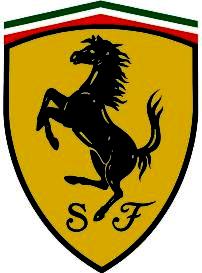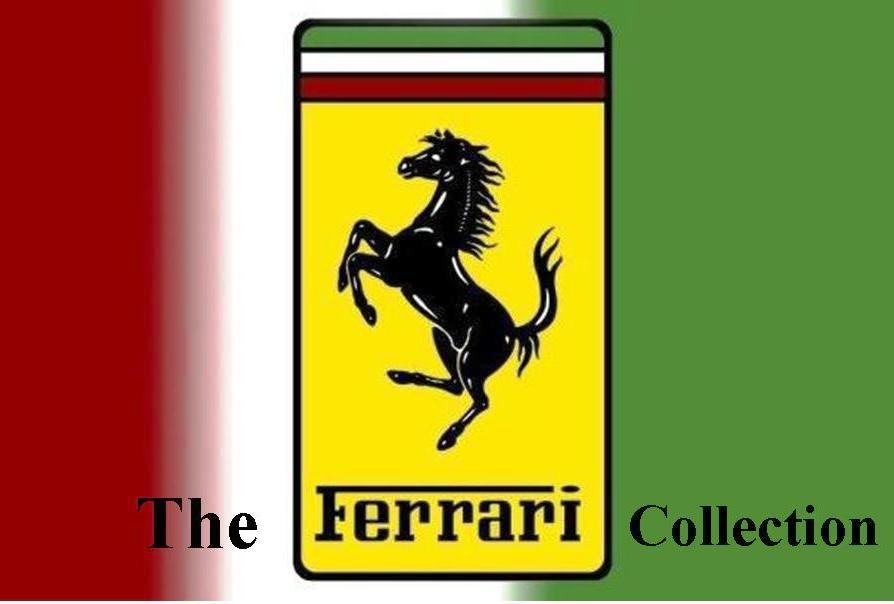Ferrari were never very quick to adapt to technical revolutions preferring to rely on the gradual development of a proven machine rather than gamble on innovation. It’s no coincidence that Ferrari were the last F1 and Le Mans front-engined winners! Sadly this philosophy did lead to problems on several occasions, for instance 1980. After taking both the drivers and constructers titles in 1979 Ferrari struggled to get 10th place in the constructors cup in 1980 and left themselves with a considerable performance gap to overcome.
The flat 12 engine, that was so instrumental in Ferrari's 1970s successes, now proved to be the team's biggest handicap. Too wide to fit in with the new ground effect designs and not as powerful as the new Turbo offerings. Ferrari’s historical reliance on 12 cylinder normaly aspirated engines was being forced into redundancy. Either a smaller V10 or V8 was needed, or forced induction. Ferrari took the Turbo path.
Opting for a V6 1.5ltr engine with a wide 120 degree V-angle Ferrari fitted twin KKK Turbos To give the necessary 1.7 bar boost. In an effort to overcome Turbo-lag fuel was injected directly into the turbos to keep them spinning during braking and cornering, this was . Ferrari developed their design through 1980 and ‘81 then hired Harvey Postlethwaite for 1982. He designed a better chassis using a honeycomb construction which improved rigidity over the sheet aluminium frame without adding weight. The 126C2 proved a winner, despite the terrible loss of Villeneuve and then Pironi, in ‘82 and again in ‘83.
Meanwhile Postlethwaite worked on a carbon fibre monocoque to try and keep up with McLaren and Lotus. Although the designs were making progress and a few wins were taken, even a constructors championship in 1983, everyone was having trouble competing with McLaren.
Ferrari's first four Turbo-seasons had been a mix bag of results so for 1985 some real changes were needed. Mauro Forghieri was replaced by Ildo Renzetti, who came in from Fiat, while Postlethwaite designed a new carbon fibre tub for the 156/85. The new engine featured an aluminium alloy block to replace the sturdy, but heavy, iron one. It proved to be rather fragile though and married to the cars rather poor aerodynamics left Ferrari even further back in the performance stakes.
Alboreto did score wins in Canada and Germany allowing Ferrari to claim 2nd place in the constructors cup.

1/24th scale kit.
Built by Ian.

Built in 2008, just after the 126C2, Ian added a lot of wiring and detailing to this Protar kit. The engine was quite nicely detailed and as the body parts didn't fit too well it seemed a reasonable project. This is typical of Protar kits, nice models can be made from them but they do demand some skill, time and attention to get the best out of them.
By adding engine detail and leaving the covers off the lines of the car are lost, this the price you pay for showing off an engine. All sorts of wire sources were used including household wires and guitar strings as well as items purchased from after market suppliers. The electrical isolator pull ring came from a Grandt line railway accessories set, but could easily have been made from fuse wire and thin rubber tube. After market photo' etch shapes were also used, the old S&S specialties set was fabulous for generic shapes, if you come across one buy it you'll be able to use it on all sorts of things. Again this kit had no seat belts of any sort in it, so some were fashioned using an aftermarket set.
The body and all the main block painting is done with Halfords acrylic car paints. Citadel and Tamiya acrylics and Humbrol enamels were used for the detail painting, washes and staining effects.
RETURN TO -
